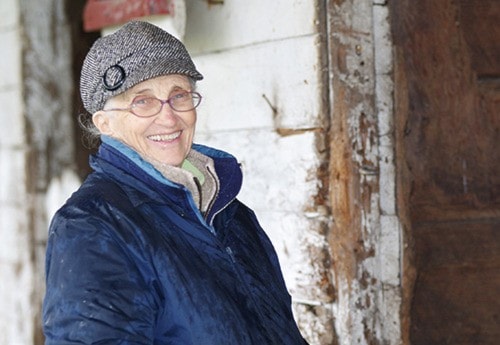Colleen Jewell came to North Saanich in 1962, although in those days she had a different last name. She came with her family from Nova Scotia, a Manitoba farm girl at heart, having been born in that province in 1931.
“We always had horses,” she recalls. “We never had any tractors — we worked the land with the big horses.”
Her husband at the time of their move to B.C. was in the navy and Jewell soon found herself drawn to the barns and tack rooms at Sandown.
“I walked hots for Bill Marsh in 1966,” she said.
Hots, she explained, were horses that had just finished racing or exercising and needed to be cooled down gradually. The work helped ensure the horses’ muscles didn’t knot up or become damaged after exerting themselves.
She eventually worked her way up at the racetrack, helping train horses and breed them. She said her first colt was born in ‘66 and she trained him on her farm. By 1968, she had met Roy Jewell, having asked him to help train her colt and would go on the work together with him. The relationship would evolve quick enough.
Jewell remembers where the tack room was when she worked at Sandown — and it’s still there, although somewhat run-down these days. She said work began at the stables there at 7 a.m. each day, feeding the horses, cleaning out the barns and doing all the little things to keep the animals in good shape.
Among the trainers and jockeys and other workers, Jewell said she has fond memories of some of the funnier things to happen at Sandown. Take, for instance, the case of the wayward mare named Bubbles. Seems she got pregnant and no one knew about it. A foal, later named Quiz was born and everyone could only speculate that its mom got out of her stall and took a fancy to one of the thoroughbred stallions.
There were some bad times as well. Jewell recalls the day a big barn at the site burned down. Some 21 horses were burned to death inside and others that had escaped were running along the road where the Pat Bay Highway is today.
“We could hear those horses that got away, galloping down the road, and you could see the fire from miles away.”
Jewell would eventually become a test official at the racetrack, taking horses’ blood and urine and checking for anything that might be giving them an edge. The old testing room is still there, a remote, windowless square that has only a singe phone line to communicate with the rest of the facility.
“I was chief test inspector for years. And we didn’t have many positive tests around here.”
She did have the odd run-in with horse owners over the testing procedure, but was able to work things out.
Jewell might have made a little bit of history at Sandown during her quarter-century there. She was asked to be an outrider when one of the track employees was let go. An outrider’s job was to accompany, on horseback, the racers to the starting gate and then be ready to head off horses that just won’t stop running. It was a tough job and you had to be a good, confident rider to do it.
“I’d never done that before. But they said I was a good rider and good at what I do.”
Jewel said she’d do it, only if she could use Roy’s horse, Quiz — who was the son of Bubbles. The jockeys, however, scoffed at the fact a woman was going to do what they thought was man’s job. It was on her first day as an outrider, however, that she proved a woman was just as capable.
“On this day, it was the fifth or sixth race and a long one, some horses bumped just past the half-mile pole and a jockey was bounced off and knocked out cold. And you know, the horses had to go over that area again.”
She rode quickly out there, fearful of the oncoming horses and the condition of the rider on the ground. Having her industrial first aid ticket, Jewell said she was cautious about how to move the man.
He came around, complained of pain in his leg — and not in his back or neck — so she picked him up and with the help of Quiz moved him to the outside rail as the rest of the field roared past. Once the jockey was seen to by paramedics, she ten had to round up the wayward horse.
“It had taken only seconds, but it felt like hours. That job got easier, too, as time went on, but that all happened on my first damn day.”
The work continued for Jewell at Sandown until around 1983 when Roy died. She said she continued on with his stable of horses for about a month but admits her heart was no longer in it.
“You have to be a little bit tough to work here,” she said.
She would eventually leave Sandown, but remained in North Saanich, where she helped with the Sunset Riding Club and introduce it to children, whether they could afford to ride or not. Making children happy while working with horses became her new interest.
Jewell said she still loves horses, although she hasn’t ridden in more than a year. She said she hopes the history of Sandown will be remembered.
“Sure, why not,” she said about the chances of including Sandown history into the new commercial area. “People do like history and we need to tap into people like me who know these things.
“Sandown is full of stories. There are so many things that happened here and many people worked here. But a lot of those people are pretty much gone now.”
